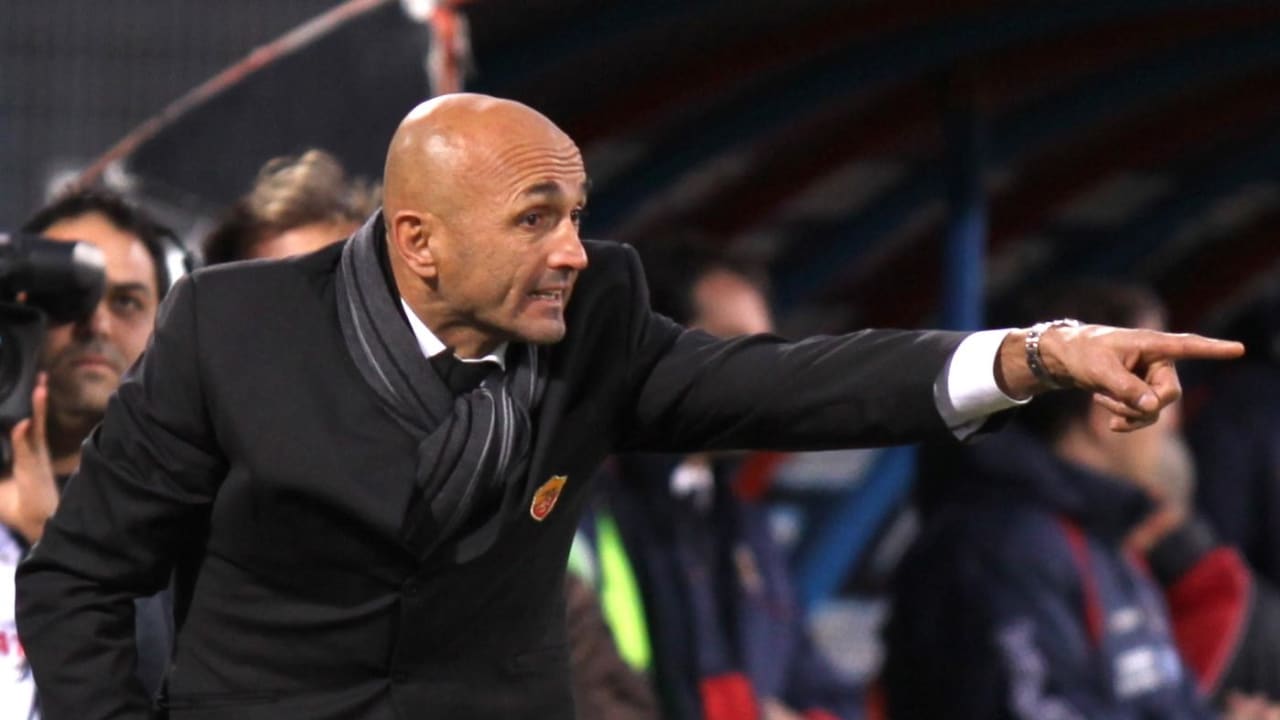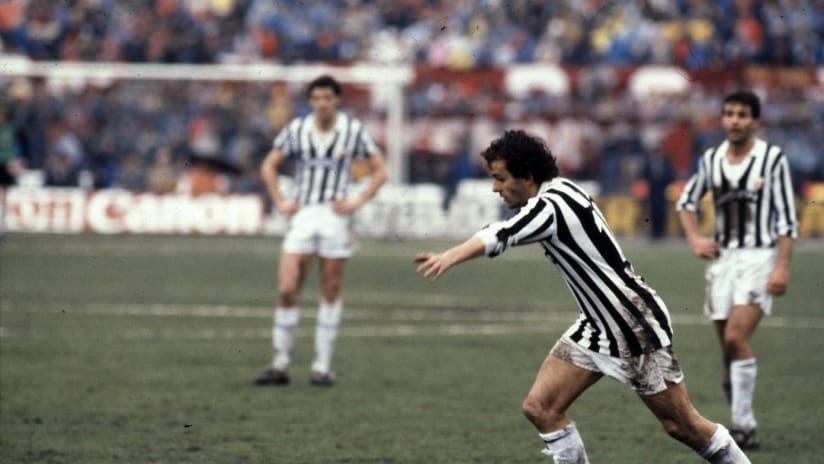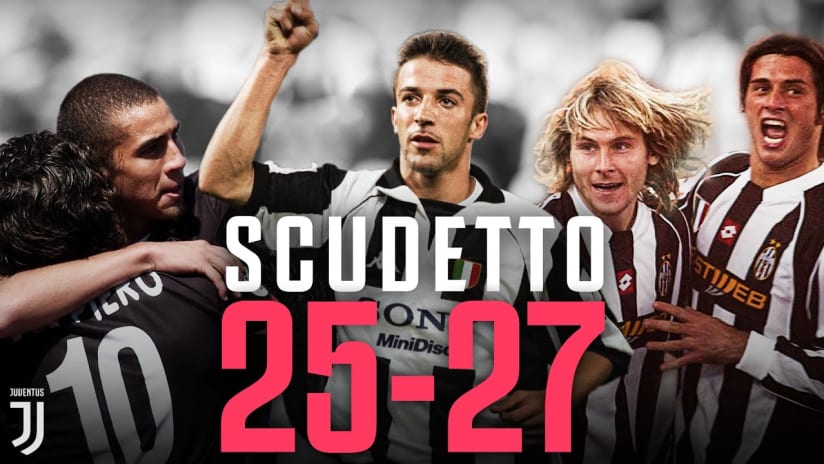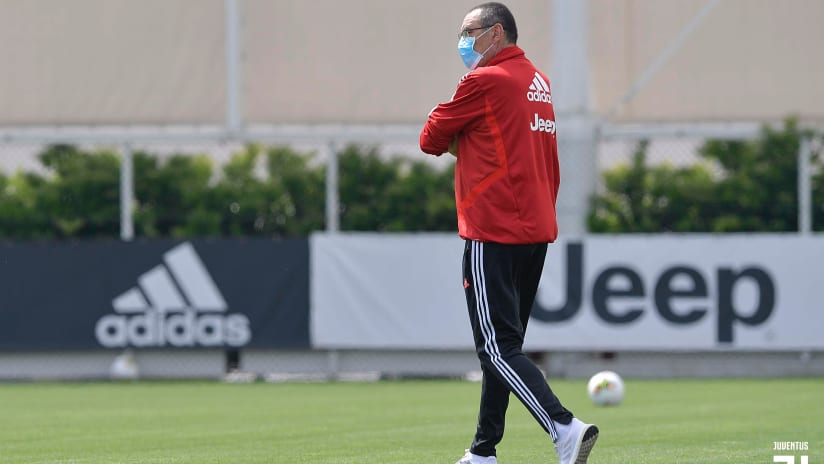24 January 2016
Rise to Roma fame
Born in the Tuscan town of Certaldo, Luciano Spalletti spent the entirety of his playing career in the lower leagues with the likes of Spezia, Viareggio and Empoli. It was with the latter that Spalletti, upon hanging up his boots in 1993, had his first taste of management. His time with the Azzurri was a revelation, initially staving off the threat of relegation from the third division before sealing a double promotion to Serie A in 1997.
After keeping them up the following season in Italy’s top tier, Spalletti endured a somewhat turbulent four years, switching between Sampdoria, Venezia, Udinese and Ancona, before returning to the Udinese dugout in 2002. There he would work his wonders in guiding the Zebrette to the UEFA Cup in 2004 and then the Champions League in 2005 – the Friulian outfit’s first ever qualification to Europe’s premier club competition.
His achievements in north-east Italy were turning heads in the capital and that summer he would move south to take over the reins at Roma. His first three seasons with the Giallorossi saw them make steady progress, culminating in their second-place finish and 82 points in the 2007/08 season. During that campaign, he also led the club to a second Italian Super Cup in their history and a second straight Coppa Italia – incidentally the last trophies to have been won by Roma.
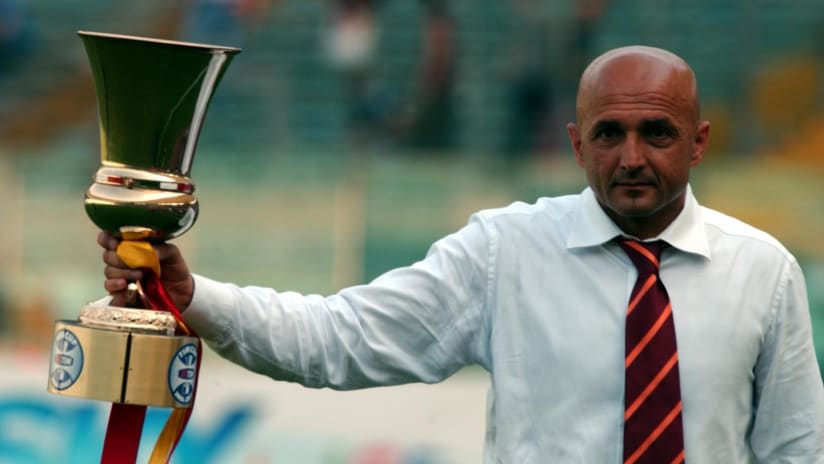
After a below-par sixth-place finish in 2008/09, Spalletti opted for a move to Zenit St. Petersburg, with whom he secured further silverware in the form of two Russian Premier League titles and as many domestic cup triumphs.
Having spent the last 20 months on gardening leave, the 56-year-old was rehired by Roma on 14 January this year, replacing the outgoing Rudi Garcia following a series of mixed results.
Onus on attack
Undoubtedly an advocate for attacking football, Spalletti’s 2005-09 side posed a constant threat in the final third, averaging almost two goals per match.
His four years at the helm also transformed the career of club captain Francesco Totti. Having played more often as a second striker in previous seasons, Spalletti deployed the Italy international in the centre-forward position.
The move yielded excellent results, as not only was Totti able to cash in on his fine finishing ability, averaging just over 20 goals in all competitions in each of the four campaigns under Spalletti, the Rome-born forward was also a key cog in linking up the play and provided 37 assists for team-mates in the same period of time.
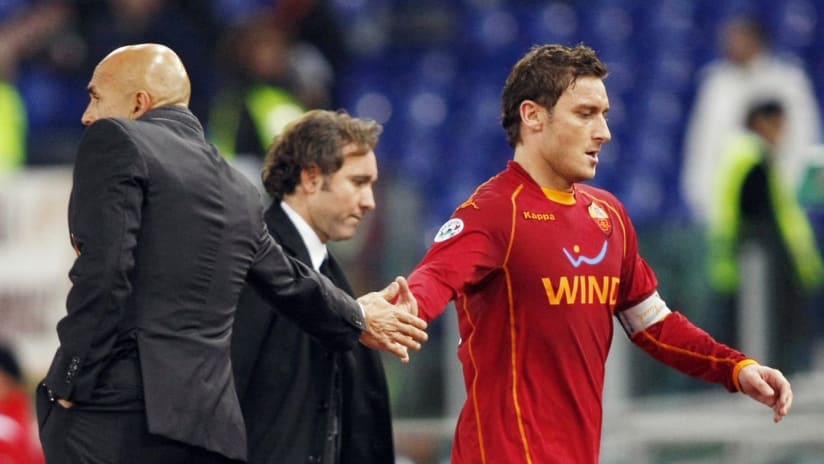
Other key components of the side’s attacking line-up were Simone Perrotta, operating in an advanced midfield role right behind Totti, wingers Amantino Mancini and Rodrigo Taddei, while he also had a penchant for a deep-lying playmaker in the form of David Pizarro and Alberto Aquilani.
With Mancini’s explosive pace and mazy dribbling on one side, Taddei’s tireless running and eye for a cross on the other, Perrotta’s box-to-box energy and pinpoint balls aplenty being launched forward by the likes of Pizarro and Aquilani, Roma’s offensive unit represented a serious menace to defences throughout the division.
However, the main drawback of this full-throttle style was that of conceding at a far higher rate than Rudi Garcia’s team of the last two-and-a-half years, as is evident in the table below:
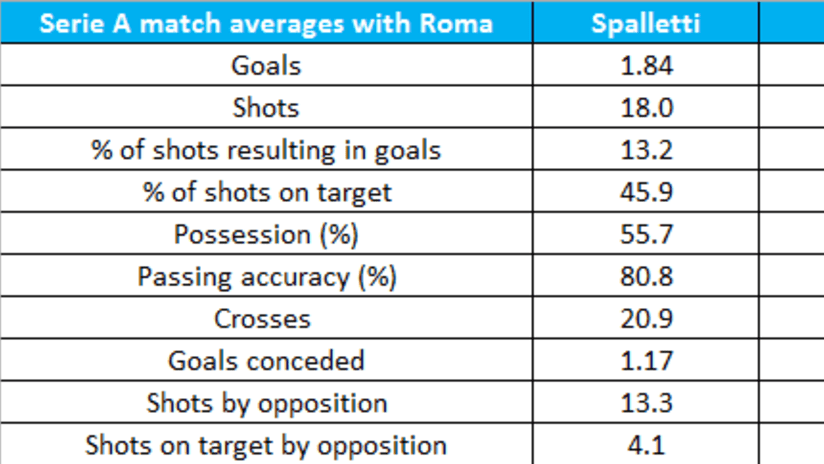
Meanwhile, it is also clear that, for all their shots, a lower proportion would actually reach the target or even materialise in a goal, compared to the striking statistics of Garcia’s charges.
From midfield to leftfield
That Spalletti favours the 4-2-3-1 formation is no secret and this is exactly how his team lined up during his first match back in charge last weekend against Hellas Verona.
Indeed, one might expect the 4-3-3 so often adopted by Garcia to be phased out altogether, as the Tuscan already looks to stamp his mark on the team with a number of tactical changes that characterised his initial four-year spell in the capital.
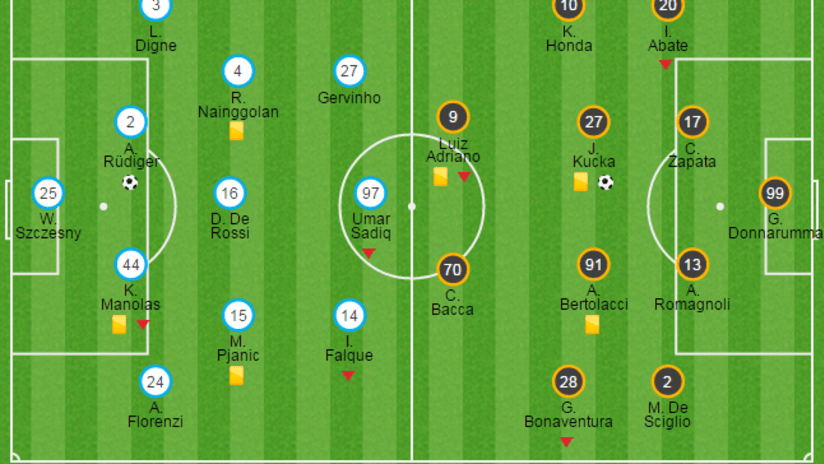
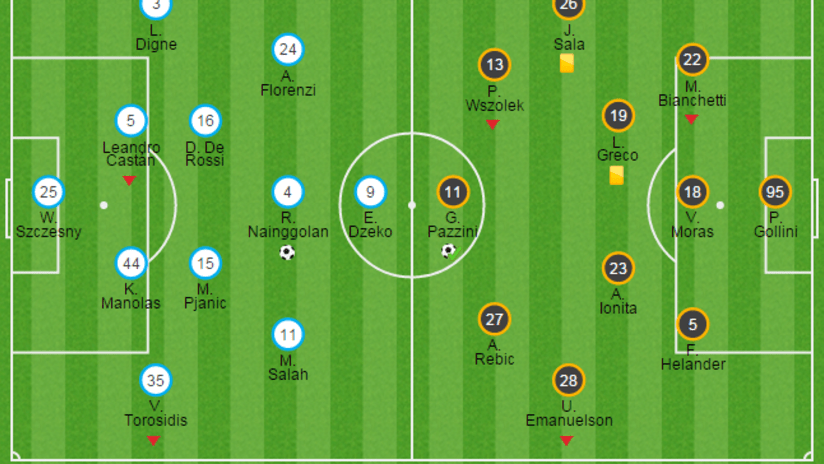
The first major alteration introduced in last Sunday’s encounter at the Stadio Olimpico was that of repositioning two of his most important midfielders, Radja Nainggolan and Miralem Pjanic. Whereas before, the Belgian and Bosnian internationals had been fielded side by side, marginally in front of Daniele De Rossi, Spalletti pushed Nainggolan further forward into the position formerly occupied by Perrotta, while Pjanic sat alongside De Rossi in the sort of deeplying playmaker role, for which Pizzarro and Aquilani had made their names previously.
One potential effect of this ‘reshuffle’ would be a greater return of goals from the dynamic Nainggolan, whose scoring rate of last year (five strikes and four assists) has tailed off in 2015/16 and he netted for the first time this term against the Gialloblu. Pjanic, meanwhile, is well-known for his pinpoint passing ability and will now be tasked to continue carving out openings and contributing with assists from further back.
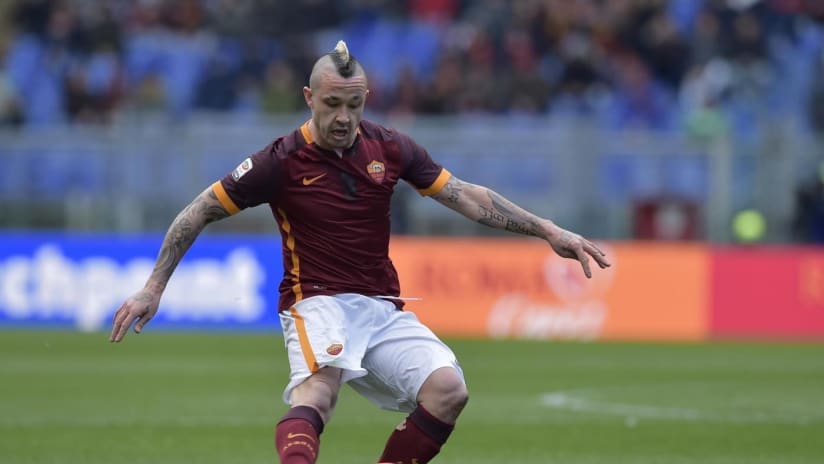
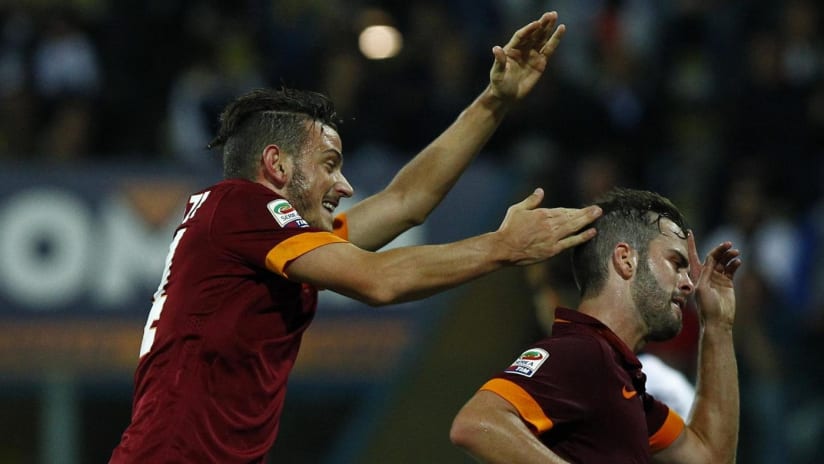
One man making his way further up the pitch is Alessandro Florenzi. The 24-year-old was deployed at full-back during the majority of Garcia’s tenure, but now the Roman looks set to be afforded a new lease of life as one of Spalletti’s wide men stationed either side of Nainggolan.
This particular transformation also has a precedent from the previous decade, when Aleandro Rosi, a right-back by trade, was pushed forwards to the right side of midfield, leading to a couple of goals against Parma and Messina respectively in 2006/07.
It is possible that Florenzi would flourish to an even greater degree in this advanced position, having begun his Giallorossi career on the wing back in 2012.

